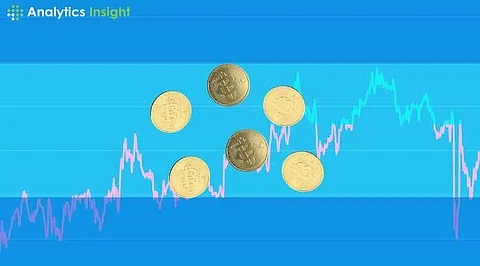

Bitcoin has witnessed a subdued performance in the market today, with its price hovering around the $93,000 mark. The cryptocurrency has been trading within a narrow range, reflecting cautious investor sentiment amid broader macroeconomic concerns and market dynamics. A closer look at the data reveals significant insights into Bitcoin price performance, the factors influencing its price, and the potential direction for the coming days.
Bitcoin opened the day on a weaker note, trading at $93,039 on Binance and touching intraday lows of $92,886. The cryptocurrency faced significant resistance near the $94,000-$95,000 range, with buyers struggling to push it past these levels. Profit booking by investors has kept upward momentum in check, leading to a decline of 0.52% over the past 24 hours.
The Relative Strength Index (RSI), currently at 38.79, suggests that Bitcoin is inching closer to oversold territory. Market volumes have also declined, with lower liquidity contributing to weaker price action. Bitcoin's inability to breach key resistance levels, combined with falling funding rates as observed in chain data, indicates persistent uncertainty among market participants.
The stronger-than-expected U.S. non-farm payroll data released last week has significantly impacted global markets, including cryptocurrencies. The addition of 256,000 jobs in December, compared to the expected 160,000, has raised concerns over the Federal Reserve's stance on interest rates. Investors now expect a reduced likelihood of aggressive rate cuts in 2025, which has strengthened the dollar and led to a decline in risk-on assets like Bitcoin.
The rise in U.S. Treasury yields has further contributed to the cautious sentiment, as higher yields make traditional financial instruments more attractive compared to cryptocurrencies. This macroeconomic backdrop has led to increased profit booking in Bitcoin, with traders opting to lock in gains ahead of anticipated volatility.
Bitcoin price currently faces a strong resistance zone between $94,000 and $95,000. A sustained breakout above $95,000 could pave the way for a rally toward $98,000, but this would require significant buying momentum. On the downside, immediate support is seen at $92,000, with a stronger base around $90,000. A breach below $90,000 could trigger further selling pressure, pushing Bitcoin toward $88,000.
The 50-day moving average (MA) is currently below the 200-day MA, forming a bearish crossover pattern that signals potential downward momentum. However, a reversal in short-term trends could lead to a recovery if Bitcoin manages to close above its 20-day MA, which is currently at $94,361.
The RSI at 38.79 indicates overselling pressure, while the MACD histogram remains in negative territory, further reinforcing bearish sentiment. A shift in these indicators would be necessary for Bitcoin to regain bullish momentum.
On-chain data reveals falling funding rates, reflecting reduced speculative pressure in the futures market. While this suggests lower leverage-induced volatility, it also points to a lack of confidence among traders. Reduced speculative activity could shift focus to the spot market, where sustained demand may support gradual price recovery.
Bitcoin supply on exchanges has decreased slightly, indicating that investors are moving their holdings to cold wallets. This trend often signals long-term bullish sentiment, as reduced exchange supply minimizes immediate selling pressure.
Global economic conditions continue to influence Bitcoin’s price action. The anticipation surrounding Donald Trump’s inauguration on January 20, 2025, has sparked discussions on potential regulatory changes in the cryptocurrency sector. Trump's plans for deregulation and innovation in financial markets have generated optimism among investors, potentially acting as a catalyst for Bitcoin’s recovery in the near term.
However, geopolitical uncertainties, combined with the latest U.S. sanctions on Russian oil and rising crude prices, have added to the complexity of market dynamics. These factors have contributed to a risk-off environment, prompting investors to tread cautiously.
The near-term trajectory for Bitcoin depends on its ability to overcome key resistance levels and maintain support in the face of macroeconomic challenges. While on-chain data suggests reduced speculative activity, the spot market may play a crucial role in determining Bitcoin’s direction.
Key events to watch include Trump’s inauguration and upcoming economic data, particularly U.S. inflation figures. Any indication of easing inflation or dovish policy shifts by the Federal Reserve could provide a tailwind for Bitcoin. Conversely, hawkish signals or further dollar strength may exert additional downward pressure.
Bitcoin’s price action on January 13, 2025, reflects a cautious market navigating global headwinds and macroeconomic uncertainty. While technical indicators suggest bearish sentiment, broader market dynamics and regulatory developments could influence the cryptocurrency’s trajectory in the coming days. Traders and investors will closely monitor key support and resistance levels, as well as global economic cues, to assess Bitcoin’s potential for recovery or further downside.
